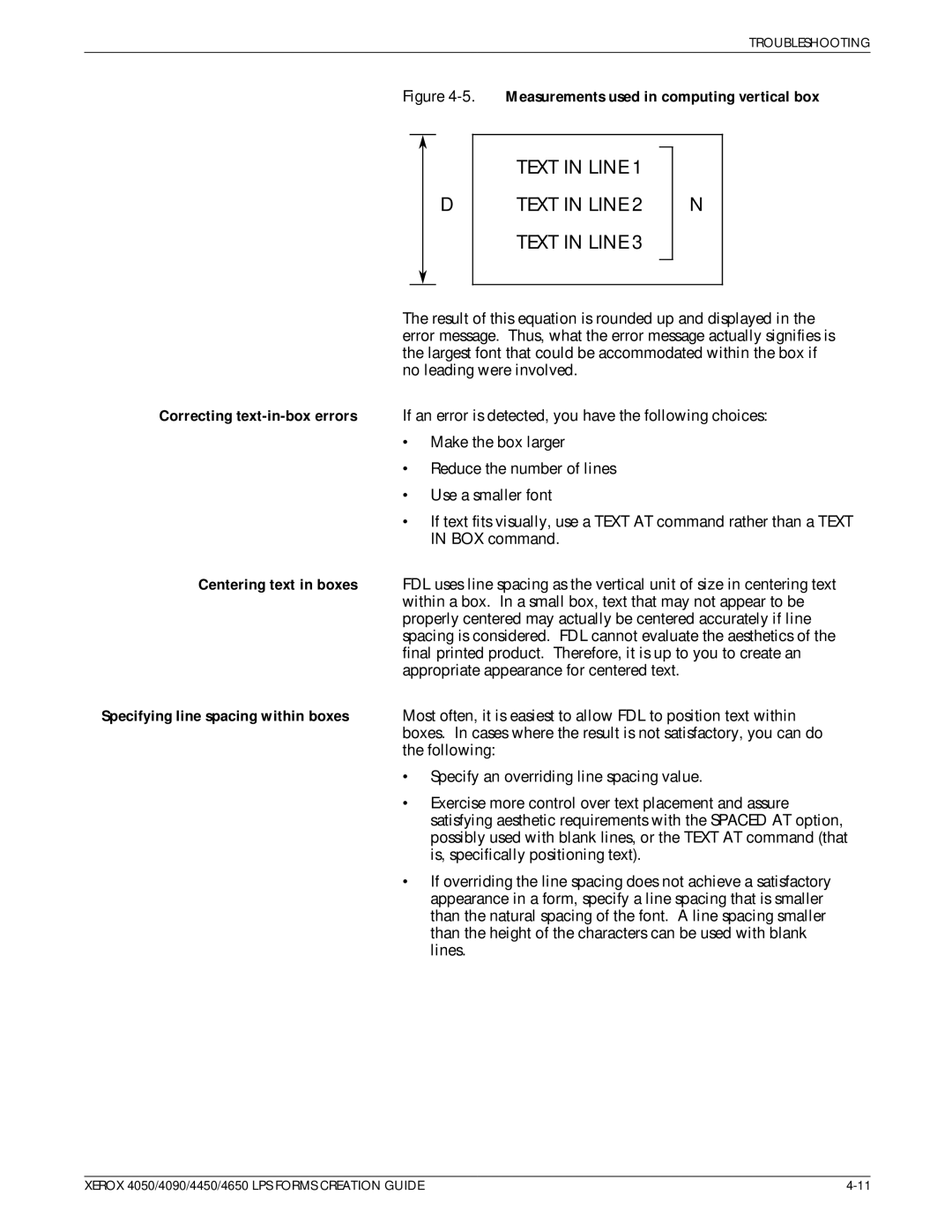
TROUBLESHOOTING
Figure 4-5. Measurements used in computing vertical box
D
TEXT IN LINE 1
TEXT IN LINE 2
TEXT IN LINE 3
N
| The result of this equation is rounded up and displayed in the |
| error message. Thus, what the error message actually signifies is |
| the largest font that could be accommodated within the box if |
| no leading were involved. |
Correcting | If an error is detected, you have the following choices: |
| · Make the box larger |
| · Reduce the number of lines |
| · Use a smaller font |
| · If text fits visually, use a TEXT AT command rather than a TEXT |
| IN BOX command. |
Centering text in boxes | FDL uses line spacing as the vertical unit of size in centering text |
| within a box. In a small box, text that may not appear to be |
| properly centered may actually be centered accurately if line |
| spacing is considered. FDL cannot evaluate the aesthetics of the |
| final printed product. Therefore, it is up to you to create an |
| appropriate appearance for centered text. |
Specifying line spacing within boxes | Most often, it is easiest to allow FDL to position text within |
| boxes. In cases where the result is not satisfactory, you can do |
| the following: |
| · Specify an overriding line spacing value. |
| · Exercise more control over text placement and assure |
| satisfying aesthetic requirements with the SPACED AT option, |
| possibly used with blank lines, or the TEXT AT command (that |
| is, specifically positioning text). |
| · If overriding the line spacing does not achieve a satisfactory |
| appearance in a form, specify a line spacing that is smaller |
| than the natural spacing of the font. A line spacing smaller |
| than the height of the characters can be used with blank |
| lines. |
XEROX 4050/4090/4450/4650 LPS FORMS CREATION GUIDE |
